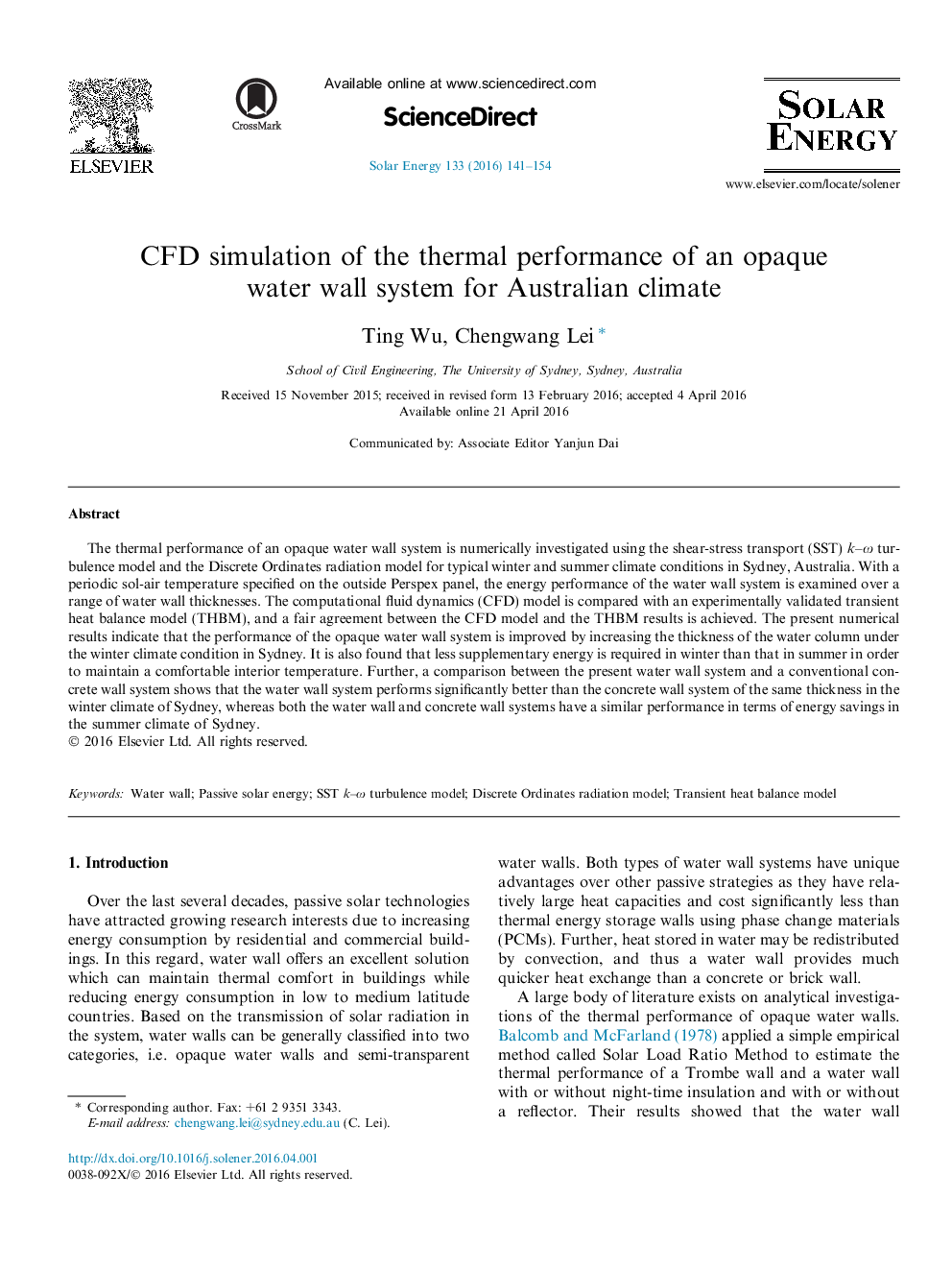| Article ID | Journal | Published Year | Pages | File Type |
|---|---|---|---|---|
| 1549339 | Solar Energy | 2016 | 14 Pages |
•The thermal performance of an opaque water wall system is investigated by CFD.•Typical winter and summer climate conditions in Sydney, Australia are considered.•The effect of the thickness of the water column is evaluated.•The performance of the water wall is compared with a conventional concrete wall.•Water wall is more advantageous than concrete wall for the winter climate of Sydney.
The thermal performance of an opaque water wall system is numerically investigated using the shear-stress transport (SST) k–ω turbulence model and the Discrete Ordinates radiation model for typical winter and summer climate conditions in Sydney, Australia. With a periodic sol-air temperature specified on the outside Perspex panel, the energy performance of the water wall system is examined over a range of water wall thicknesses. The computational fluid dynamics (CFD) model is compared with an experimentally validated transient heat balance model (THBM), and a fair agreement between the CFD model and the THBM results is achieved. The present numerical results indicate that the performance of the opaque water wall system is improved by increasing the thickness of the water column under the winter climate condition in Sydney. It is also found that less supplementary energy is required in winter than that in summer in order to maintain a comfortable interior temperature. Further, a comparison between the present water wall system and a conventional concrete wall system shows that the water wall system performs significantly better than the concrete wall system of the same thickness in the winter climate of Sydney, whereas both the water wall and concrete wall systems have a similar performance in terms of energy savings in the summer climate of Sydney.
